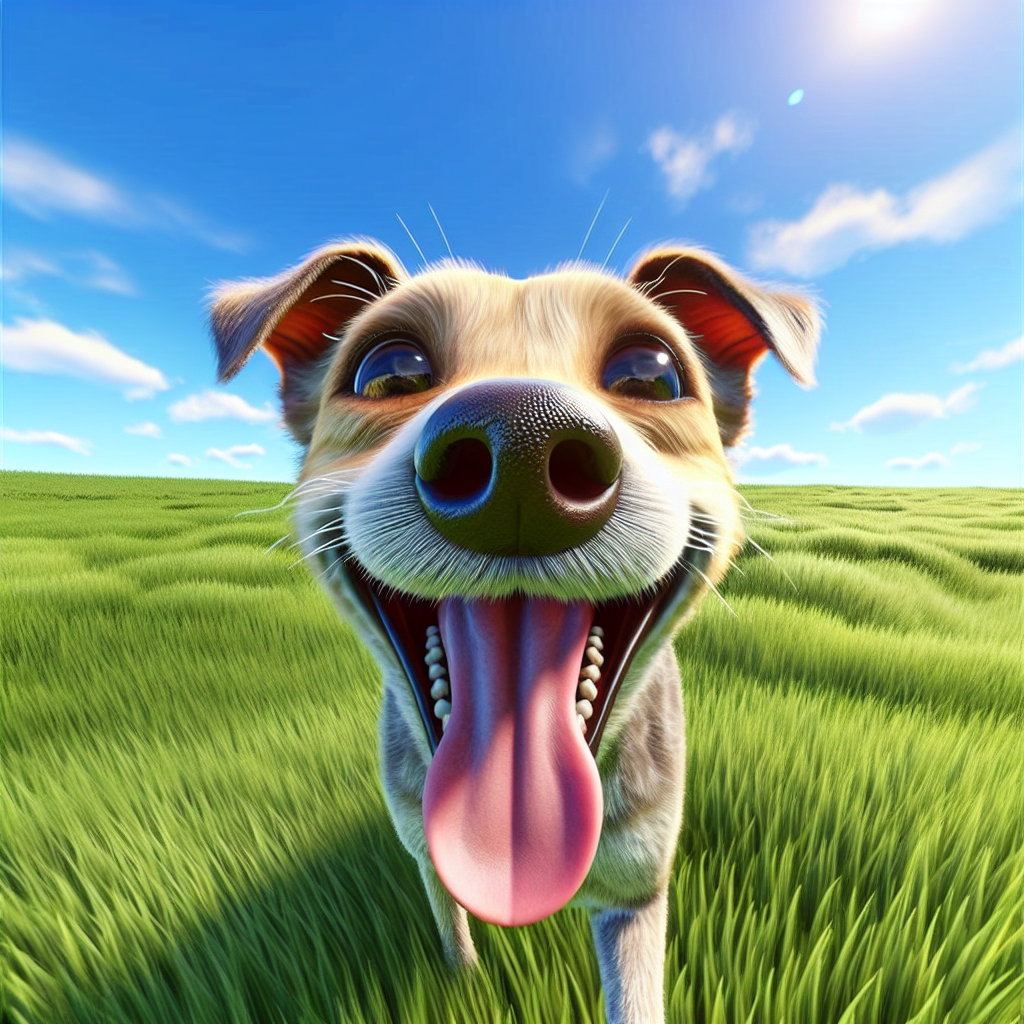Introduction

Ever had a plan that seemed foolproof until it wasn’t? That’s the flea bath for you. You think you’ve got it all figured out—your dog gets a bath, you use some flea shampoo, and voila, problem solved. But then, surprise! Your dog still has fleas after the bath. Flea bath didn’t work? Welcome to the club. Let’s dive into this mess and see why that flea shampoo effectiveness isn’t as great as they promised and explore why flea treatment fails so often.
The Flea Bath Fiasco
Alright, picture this: it’s Sunday afternoon. You finally muster the courage to give your pooch a bath. You’ve got your rubber gloves on, the flea shampoo ready, and an old band t-shirt you don’t mind ruining. You scrub and rub, expecting those pesky fleas to wash away like soap bubbles down the drain. But alas, the fleas are like that friend who just won’t leave the party.
So, why didn’t it work? Was it the shampoo? Was it you? Who’s to blame here? Flea shampoos promise the world and sometimes deliver a whole lot of nothing. They can be like that trendy restaurant that everyone raves about, but when you finally go, the food’s just…meh. Not to say that all flea shampoos are duds, but if your dog still has fleas after bath, maybe it’s time to reconsider the approach.
Common Mistakes When Battling Fleas
Look, I’ve been there—panicking and googling “how to get rid of fleas in home” at 2 AM. It’s not a good look, I know. But here’s the deal, we often mess up the whole flea war by committing some classic blunders.
First, there’s the timing. Flea eggs have more staying power than bad fashion trends. If you’re not consistent, they’ll hatch and laugh in your face. You can’t just do one flea bath and call it a day. Then there’s the method. Soapy water isn’t enough. You need something that packs a punch.
And let’s not forget about the environment. Oh boy, here we go—flea control means tackling the house too. So, while you’re scrubbing Fido, those sneaky fleas are setting up shop in your carpet. It’s a cycle, and breaking it needs more than just shampoo. It’s like trying to stop a waterfall with a spoon.
The Role of Environment in Flea Control
Now, let’s talk about your home—a.k.a. the flea amusement park. Fleas love it there. It’s warm, cozy, and full of snacks (that’s you and your pets, by the way). If you’re only focusing on the dog, you’re missing the bigger picture.
Here’s a story for you: a friend once spent weeks scrubbing her dog, but not a single minute vacuuming or washing the dog bed. It was like trying to dry off while still in the rain. The fleas just kept coming back.
You need to hit them where it hurts—everywhere. Vacuum like your life depends on it. Wash everything that fits in the washing machine. Use a flea spray for the carpets and furniture. It’s a battle of attrition, not a one-time skirmish.
Seeking Professional Help
When all else fails, and you’re at your wit’s end, there’s no shame in calling in the pros. Sometimes we need a vet’s flea treatment advice to guide us out of the flea-infested woods. They’ve seen it all, and they know what works and what doesn’t.
I remember this one time, my neighbor dealt with a flea infestation that spread to her garden. The poor lady tried every home remedy in the book. Finally, she called in the cavalry—a professional pest control team. It cost her a pretty penny, but the relief was priceless.
The vet can offer treatments that go beyond shampoos. Pills, topical treatments, and sometimes, a good old-fashioned scolding for not staying on top of the problem. It’s not just about exterminating the fleas but preventing them from coming back.
Fighting fleas is a full-time job. But once you get the hang of it, you’ll feel like a warrior in your own right. Thanks for sticking with me through this little journey. Here’s to hoping your flea fiasco turns into a flea-free life soon! Cheers, and good luck!
The Flea War: Why Your Bath Might Be Failing
Picture this—you’re in your bathroom, dripping wet, and so is your pal, Fluffy. You’ve just given him a flea bath, but those pesky fleas are still hanging around like unwanted house guests. You start thinking, “Why isn’t this flea bath working?” Maybe it’s the shampoo, or maybe these fleas are like the Chuck Norris of the insect world. You’ve tried everything—scrubbing, rinsing, even a bit of pleading. Yet, they’re still there, making you feel like you’re losing the war on fleas. But don’t worry, you’re not alone in this battle.
Sometimes, a flea bath isn’t enough. It’s not that the bath itself is ineffective, but fleas are tough little critters. They have a way of sticking around. Maybe the shampoo isn’t strong enough, or perhaps you’re not leaving it on long enough. Or could it be that your timing is off? Fleas have a life cycle, and catching them at the right stage is key. Understanding fleas on pets isn’t just about the bath—it’s about knowing your enemy.
Beyond the Bath: Alternative Flea Treatments
So, the bath didn’t work out. What’s next? Well, you’ve got options. The world of flea-fighting is vast, and it doesn’t have to break the bank. Imagine a whole arsenal of alternative flea treatments. Powders, pills, spot-on treatments—they’re all out there waiting for you to give them a shot. No need to go all Rambo on these fleas, though. Sometimes it’s the simplest solutions that pack the biggest punch.
There’s a little something for everyone. You might try a flea collar that works around the clock or maybe a pill that gets to work from the inside out. Some folks swear by spot-on treatments, those tiny tubes you squeeze onto Fluffy’s back. They’re quick and easy, and they might just do the trick. The key here is consistency. Whatever you choose, stick with it. Fleas are persistent, but so are you.
The DIY Route: Home Remedies for Fleas
Feeling adventurous? Let’s talk DIY flea solutions. You might be surprised at what you can find right in your kitchen. Vinegar, lemon juice, baking soda—they’re not just for cooking anymore. They could be your ticket to a flea-free home. Sure, it sounds like you’re making a salad, but these ingredients might just be the answer you’re looking for.
Home remedies for fleas on dogs are all about trial and error. Maybe a little bit of vinegar in Fluffy’s bath water will send those fleas packing. Or perhaps a lemon rinse will do the trick. Baking soda is like magic dust—sprinkle it on the carpet, and watch it work. DIY solutions may not be foolproof, but they’re worth a shot. If nothing else, your house will smell fresh, and Fluffy might end up with a shiny coat.
A Flea’s Life: Understanding the Enemy
Ever think about what makes these fleas tick? It’s like trying to understand a bad sci-fi movie—hatching, biting, multiplying. But knowing their moves might give you the upper hand. Fleas have a life cycle, and catching them at the right stage is crucial. Eggs, larvae, pupae, and adults—each stage presents its own challenge.
Understanding the flea life cycle is your secret weapon. It’s not just about killing the adult fleas; it’s about breaking the cycle. If you can stop them before they lay more eggs, you’re on your way to winning the battle. Remember, knowledge is power. The more you know about your enemy, the better equipped you’ll be to fight back.
Seeking Help: When to Call a Vet
And then there’s that moment when you realize you might need some professional help. Don’t feel bad about it—sometimes you gotta call in the pros. If you’re at your wit’s end, a vet can be a lifesaver. They see these little devils every day and might have the magic trick you need.
When to contact a vet for fleas? Well, if you’ve tried everything and those fleas are still partying, it’s time to make the call. Vets have access to treatments you can’t get over the counter, and they might spot something you’ve missed. A vet visit might cost a bit, but peace of mind is priceless. Plus, you and Fluffy deserve a break from this flea madness.
Thanks for sticking with me through this flea saga. Remember, you’re doing great, and you’re not alone in this battle. Keep at it, and give Fluffy a pat from me. Good luck out there!
When Fleas Play Hardball: Understanding Stubborn Infestations
Oh, fleas. Those little hitchhikers on our pets. They’re like that one guest who overstays their welcome. You give your pet a flea bath, and you think you’ve won. But those fleas? They laugh in the face of a flea bath. Persistent little critters, aren’t they? So why do they stick around?
Well, it’s not just about scrubbing your pet down. Fleas are crafty. They hide in carpets, bedding, and even in the cracks of your floor. They’ve got a whole operation going on. And when you’re dealing with stubborn flea infestations, it’s like playing a game of whack-a-mole. You hit one, and another pops up. It’s frustrating, but understanding their hideouts is the first step.
And let’s not forget about the flea eggs and larvae. They’re the sneaky culprits. You might think you’re in the clear, but then—bam!—they hatch and it’s game on again. So, when dealing with these persistent flea issues, it’s all about being thorough. Keep at it, don’t lose heart, and remember, you’re not alone in this battle.
The Fine Art of Flea Prevention: What You Might Be Missing
Alright, so you’ve got the fleas under control—for now. But preventing them from coming back? That’s a whole different ball game. It’s like playing chess. You’ve got to think a few moves ahead. So, what are the flea prevention tips you might be missing?
First off, cleanliness is key. And I don’t just mean giving your pet a bath. Vacuuming your home regularly is a must. Fleas love to hide in dark corners and fabrics. So, get that vacuum out and give your carpets a good once-over. And don’t forget to wash your pet’s bedding often. Keep things clean, and you’re already ahead of the curve.
Now, here’s a curveball—consider your yard. Fleas can hitch a ride on your pet from outside. Trim the grass, and keep the yard tidy. It’s not just about the inside of your home. And don’t forget about regular flea treatments for your pet. They’re like a suit of armor against these pesky invaders.
Natural Remedies: When to Trust Mother Nature
Mother Nature’s got some tricks up her sleeve. When those chemical treatments aren’t cutting it, natural flea remedies might just save the day. But knowing when to use them? That’s the tricky part.
Let’s talk about some options. Diatomaceous earth is a natural powder that can help with fleas. Sprinkle it around your home, and it can dehydrate the fleas. But be careful—it can be messy. Another remedy? Essential oils like lavender or peppermint. Fleas hate them, but your home will smell great. Just remember, use them sparingly. A little goes a long way.
And then there’s the trusty apple cider vinegar. Add a small amount to your pet’s drinking water or use it as a rinse after a bath. It’s like a natural flea repellent. But remember, not all pets like the taste, so ease them into it. Trusting Mother Nature is an art, and it’s all about balance.
Flea Treatment Costs: What Your Wallet Should Expect
Now, let’s talk numbers. Tackling fleas isn’t just a battle of patience—it’s a battle of the wallet too. The cost of flea treatments can add up, and it’s important to know what you’re in for.
First, there’s the expense of the actual treatments. Flea shampoos, topical treatments, and even oral medications—they’re all part of the arsenal. And they don’t come cheap. You’re looking at spending anywhere from $30 to $100, depending on the product and your pet’s size.
Then, there’s the cost of prevention. Regular treatments, cleaning supplies, and even professional pest control if things get really hairy. Flea treatment expenses can sneak up on you, so it’s best to budget for them. It’s a bit like buying insurance—you hope you won’t need it, but you’re glad you have it when you do.
Tales from the Trenches: Real Life Stories and Lessons Learned
Alright, time to hear from the brave souls who’ve been in the trenches—real flea battle stories from fellow pet owners. It’s like gathering around a campfire, sharing war stories. And boy, do they have some tales to tell.
Take Sarah, for example. She thought she had things under control after a flea bath didn’t work. But those fleas had other plans. After a few rounds of trial and error, she found the right combo of vacuuming, natural remedies, and regular treatments. It was a long fight, but she came out on top.
Then there’s Mike. He battled a stubborn flea infestation for months. His secret weapon? Persistence and a good sense of humor. He kept at it, trying different methods until he found what worked. His advice? Don’t give up. And maybe keep a bottle of wine handy for those tough days.
These stories remind us that we’re all in this together. Fleas might be stubborn, but with enough grit and determination, they’re no match for us pet owners. And who knows? Maybe one day, you’ll be the one sharing your own victory tale.
So, there you have it, folks. Thanks for sticking with me through this flea-ridden journey. Here’s to hoping you’re now armed and ready. Go get those fleas, and may your pets thank you with lots of wagging tails and purrs. Cheers!
Quick Takeaways:
Alright, so you’ve given your dog a flea bath, and the little critters are still hanging on for dear life. It’s like they missed the memo that their eviction notice was served. So, what gives? First off, remember that a flea bath isn’t a one-size-fits-all solution. Flea shampoo effectiveness varies and sometimes, a flea bath just didn’t work as you hoped.
Maybe the shampoo wasn’t left on long enough or maybe those fleas are just a tough crowd. But don’t worry, there’s more in the flea-fighting toolkit. Powders, pills, spot-on treatments—you’ve got options. These can be more effective than just a bath, which might only wash away adult fleas but not tackle the eggs or larvae lurking around.
Now, if you’re feeling crafty, there are some home remedies for fleas on dogs. A mix of vinegar and lemon juice could help, though you might end up with a dog that smells like your favorite vinaigrette. Then there’s the flea life cycle to consider. Knowing how fleas hatch and multiply can give you the upper hand. They don’t just vanish after a bath—oh no, they’re tricky little things.
And hey, if all else fails and you find yourself throwing up your hands, contacting a vet for fleas can be a life-saver. They deal with these pests day in and day out and might have a solution that doesn’t break the bank. So, chin up, and don’t throw in the towel just yet. There are ways to win this flea battle.
FAQs:
1.
Why didn’t the flea bath work for my dog?
Flea baths can be hit or miss. Sometimes, the flea shampoo isn’t effective against all stages of the flea life cycle. It might wash away adult fleas but not affect the eggs or larvae. If your dog still has fleas after a bath, consider trying a different treatment like spot-ons or oral medications.
2.
What should I do if my flea bath didn’t work?
If a flea bath didn’t work, don’t panic. There are plenty of alternative flea treatments available. You can try spot-on treatments, oral medications, or even flea collars. Each has its pros and cons, so it might take some trial and error to find what’s best for your furry friend.
3.
Are there any home remedies for fleas on dogs?
Sure thing! Some folks swear by natural remedies like apple cider vinegar, lemon juice, or baking soda for tackling fleas. These can be a good starting point, but remember, they might not be as potent as commercial treatments—so keep a close eye on your pet’s flea situation.
4.
When should I contact a vet for fleas?
If you’ve tried various treatments and your dog still has fleas, it’s time to call in the pros. Vets can offer prescription treatments that are more powerful and tailored to your pet’s needs. They can also check if there’s an underlying health issue making your pet more susceptible to fleas.
5.
Can fleas be completely eradicated from my home?
It’s a tough job, but not impossible. To get rid of fleas in your home, you need a multi-pronged approach. Vacuum regularly, wash pet bedding in hot water, and consider using flea sprays or foggers. Consistency is key in breaking the flea life cycle and preventing a re-infestation.
Conclusion:
So, the flea bath didn’t work, huh? Don’t beat yourself up—fleas are stubborn little pests with a knack for survival. It’s not just about a quick dip in the tub; it’s about understanding their tricks and staying one step ahead. Fleas thrive on chaos, but with a bit of strategy and patience, you can outsmart them.
Whether you’re trying out alternative flea treatments, concocting your own home remedies, or seeking vet flea treatment advice, remember that persistence pays off. The road to a flea-free home might be a bumpy one, but you’re not alone in this. Plenty of pet owners have been where you are, facing the same battles and coming out victorious on the other side.
So, hang in there. You’ve got this. Keep up the fight, and soon enough, those fleas will be nothing but a distant memory. In the meantime, give your pet some extra love and belly rubs—they deserve it. Thanks for reading, and good luck on your flea-busting journey!
References:
1. https://www.vets4pets.com/pet-health-advice/why-isnt-my-flea-treatment-working/
2. https://www.petmd.com/parasites/can-i-reapply-flea-treatment-early
3. https://pethelpful.com/dogs/why-is-dog-flea-treatment-not-working
4. https://www.petcarerx.com/article/my-dog-still-has-fleas/126
5. https://www.petsradar.com/advice/why-is-my-flea-treatment-not-working-our-vet-offers-some-answers
Our solution eradicates fleas on contact without harmful chemicals, ensuring a safe environment for your pets and family. Easy to use and highly effective, SayByeBugs helps you maintain a flea-free home. Learn more and order today at SayByeBugs.com
Our solution eradicates fleas on contact without harmful chemicals, ensuring a safe environment for your pets and family. Easy to use and highly effective, SayByeBugs helps you maintain a flea-free home. Learn more and order today at SayByeBugs.com








